Ever wondered why humans have five fingers and toes on each limb? Evolution – or a favoured religious figure – settled not on four (presumably too few) and not on six (clearly too many) digits to top our hands and feet. The only clear reason we know why is the fact our tetrapod ancestors could give each other high-fives around 400 million years ago.
What’s good for those clinging to this rock revolving around the golden sun is clearly good enough in the automotive world for Audi. It has banked on five-cylinder engines for a (slightly) shorter time frame, with this year marking the 40th anniversary since a ‘just right’ cylinder count was introduced. Enter a (very) quick history lesson, then a celebration.
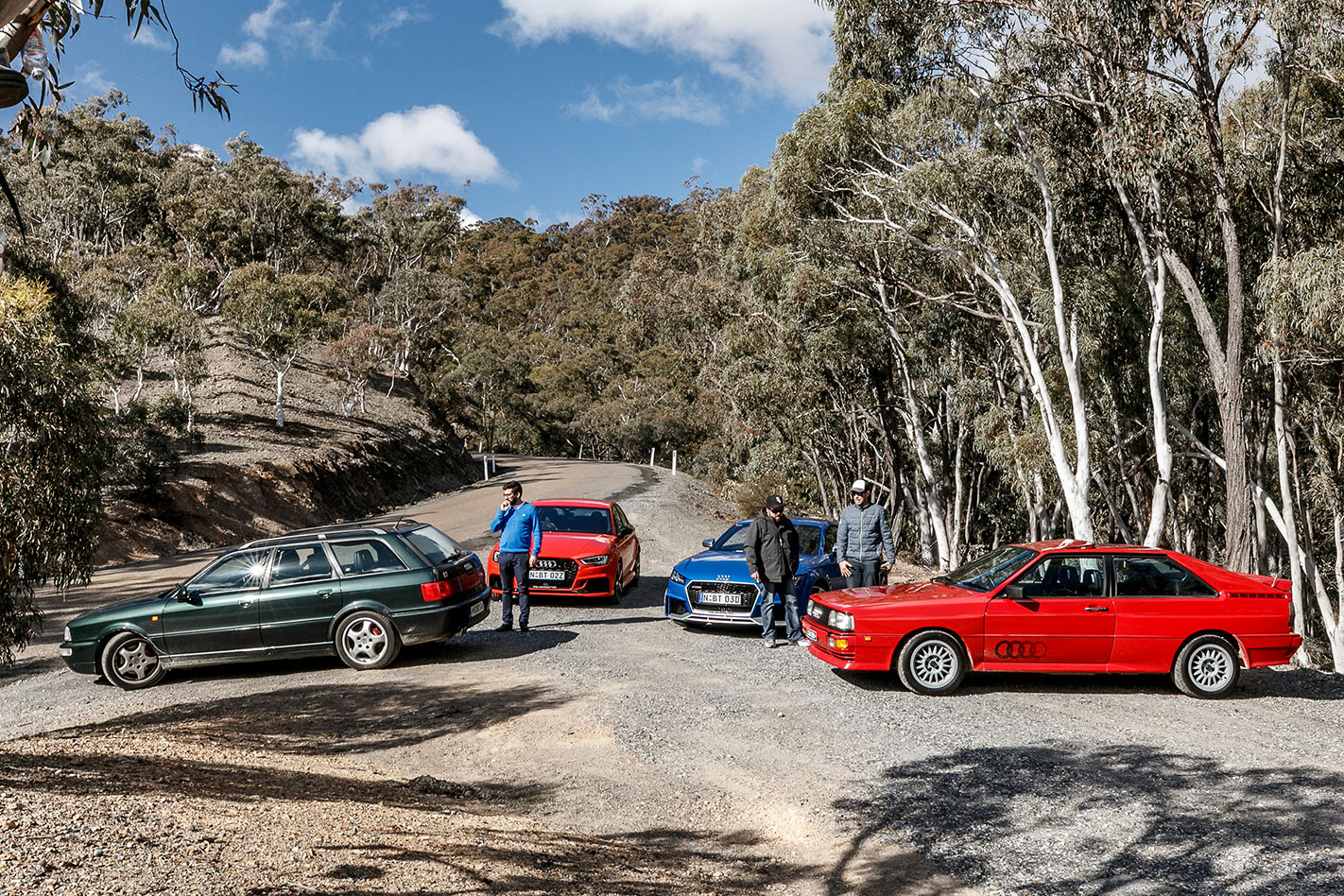
Audi survived and a VW EA827 four-cylinder was lengthened – as opposed to a Holden Starfire four that sliced off two cylinders from a six – to create a 2.2-litre five-cylinder, chosen to provide something more upmarket than a four without the nose-heaviness of a six. It was a simple matter of evolution.
All this pointing at the blackboard about five cylinders must occur to understand the significance of the Audi Quattro unveiled at the 1980 Geneva motor show. Here was a brand, almost dead 15 years earlier, now thrusting itself onto centre stage with a three-door performance coupe offering all-wheel drive and a turbocharged five-cylinder claiming circa-Mk5 Golf GTI outputs – 147kW at 5500rpm and 285Nm at 3500rpm. In a modern context it would have been like GFC-era Daewoo launching a supercar.

Indeed, nothing could touch a Quattro in snow or on rally special stages. And so began six ‘Quattro years’ where Michele Mouton, Hannu Mikkola, Stig Blomqvist and Walter Rohrl snared 23 rally wins and four titles from behind the many driving lights of the racecar. Audi still claims that its all-paw technology was two years ahead of rivals.
Fast forward about 15 years and Audi, in 1994, built the RS2 Avant in conjunction with Porsche. Walk ahead another 15 years and Audi revived the turbo-five with 2009’s TT RS having ended five-cylinder production in 1997. In 2017 the four-ringed brand has released both its first RS3 sedan and a new-gen TT RS, each sporting an all-fresh fiver.
So Audi is sticking with an odd cylinder count, but does that now actually seem odd? Has the ’80s revolution become more about reminiscing over past glories? Either way, a five-pot birthday bash awaits at the epic Abercrombie Ridge hillclimb outside of Goulburn, New South Wales.
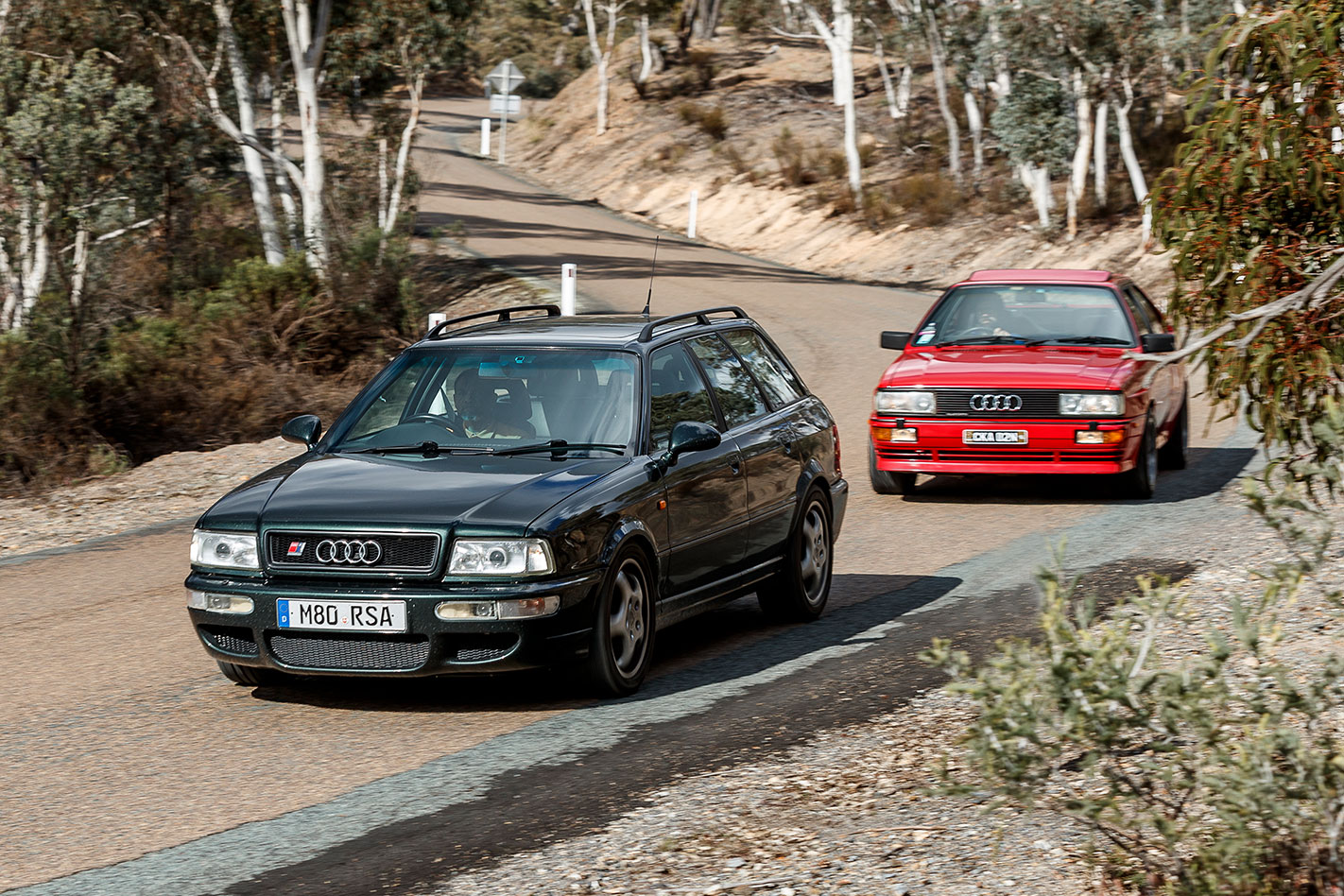
By 1983, Audi produced the 22cm-longer Sport Quattro derivation of the Ur-Quattro original, now with an aluminium engine and 225kW, that was a Group B homologation special and also became the most powerful production car ever launched in Germany. A decade later the RS2 Avant beat this while still using a 2.2-litre swept capacity and 20 valves.
Sporting a larger turbo, uprated radiator and new exhaust system, Porsche raised power from the S2 Avant’s 169kW to 232kW at 6500rpm, teamed with a mega 410Nm at 3000rpm. It retained all suspension and all-wheel drive components – which, like the Quattro, featured a locking rear differential up to 25km/h – but with 964 Turbo wheels and brakes.
Ingolstadt built Avant shells with S2 running gear and sent them to Zuffenhausen for final assembly, with Recaro buckets and special trim added to the mechanical changes, then Audi and Porsche evenly divided the financial fruit of Project RS2.
Approaching an RS2 Avant is a reminder of how big modern cars have become. At 4510mm long its body stops 130mm short of an AMG CLA45 Shooting Brake, while at 1695mm wide it’s 82mm narrower.
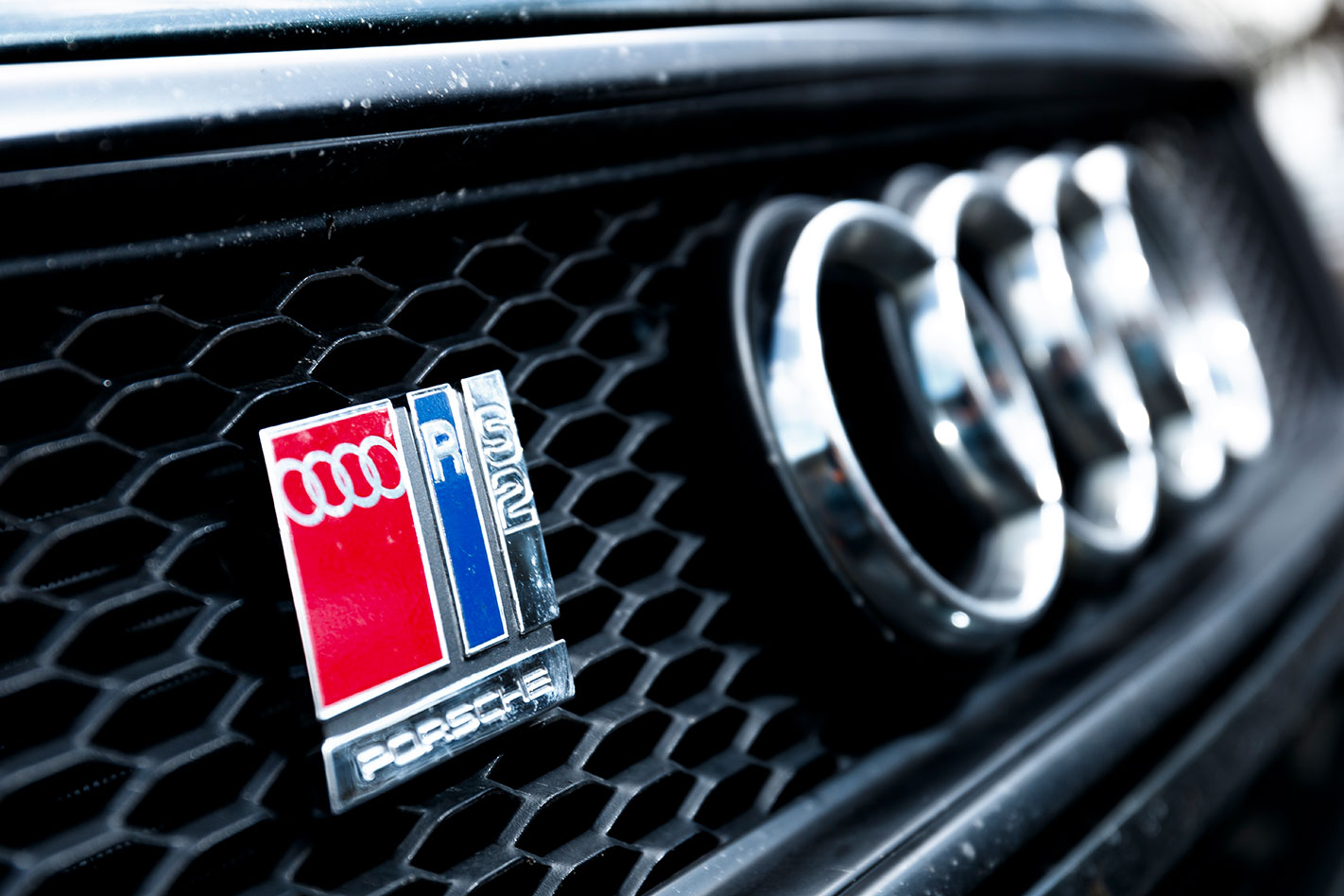
The turbo five fires with a baritone burr and slowly enough to surmise that the pistons must be the size of Popeye’s forearms. The six-speed slides into first with a slick, but long-throw action, though clutch take-up is base-Audi-TDI breezy. Then, we pause…
Astonishing turbo lag below 4000rpm, accompanied by the flat whirr a laser printer makes when spitting out paper, illuminates how far forced induction technology has come. Above that engine speed, though, well, Fido’s paws had better be sticky.
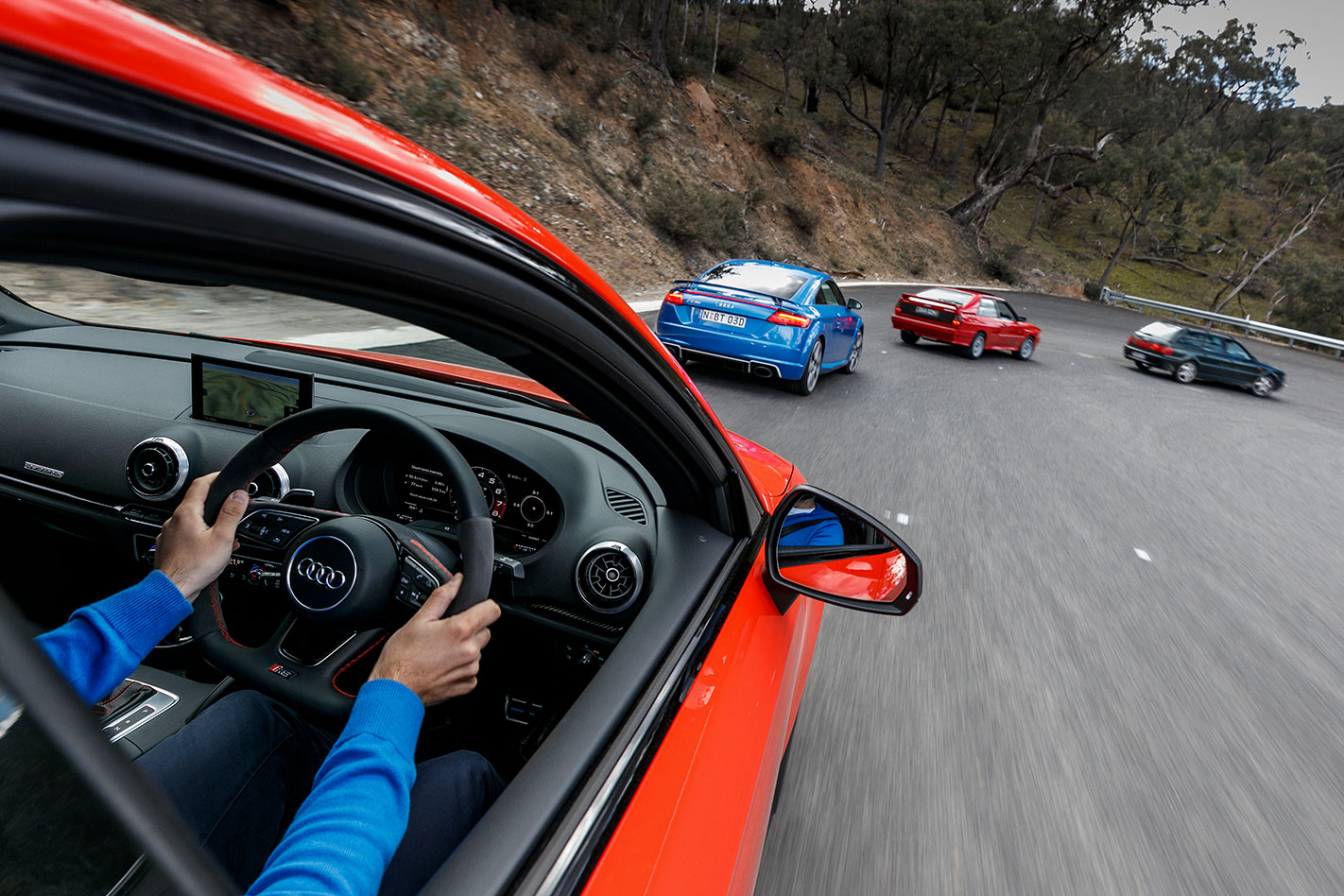
If the best four cylinders zing when revved, then this five cylinder bores loudly like heavy machinery cutting into the side of a rock face, complete with hard-edged menace. Only the RS2 Avant is overlaid with wastegate whistle that neither brand would entertain today.
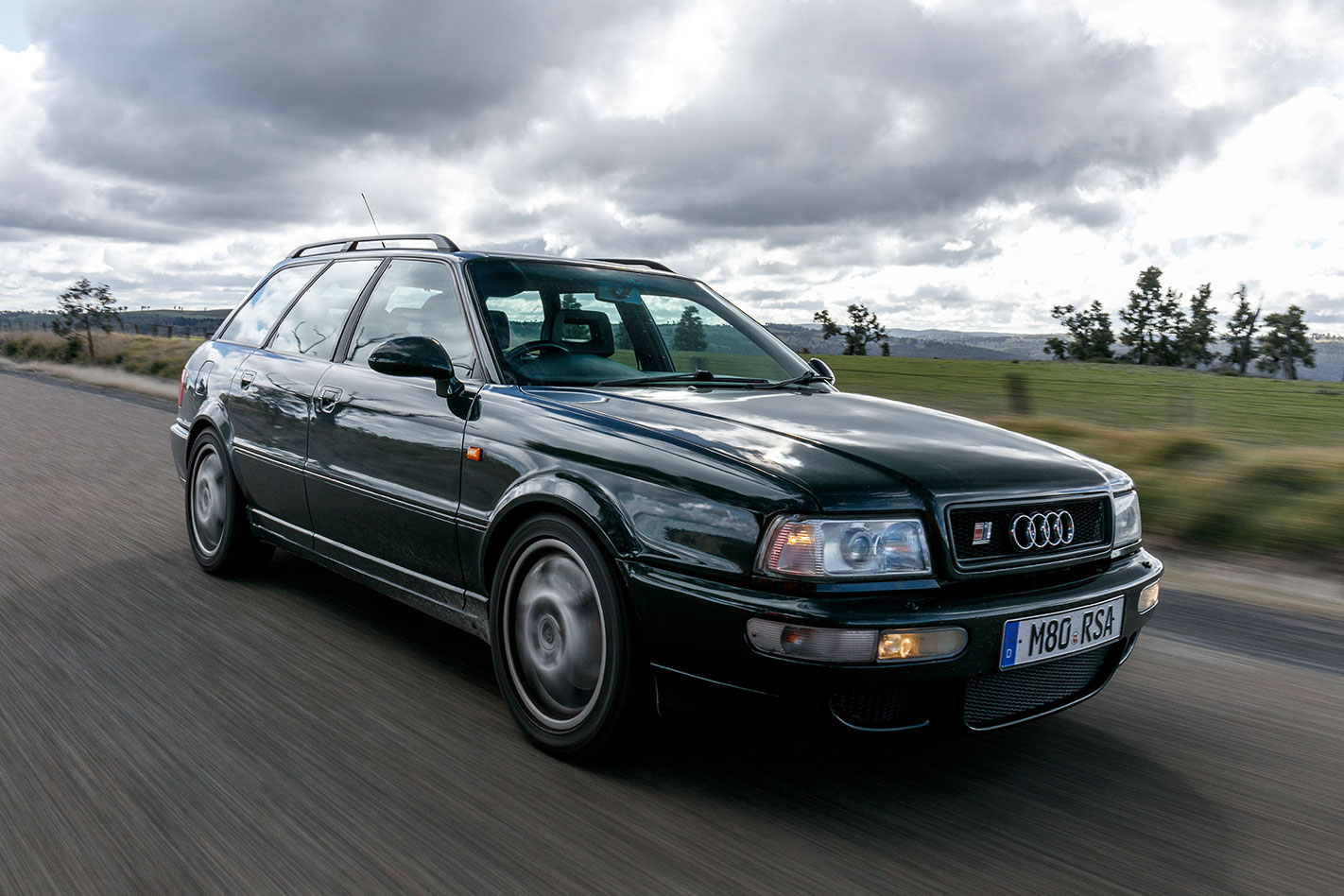
It is this immersive dynamic trait that presents as the clearest link to the Quattro – and presents itself as the greatest departure from the new RS3 and TT RS.
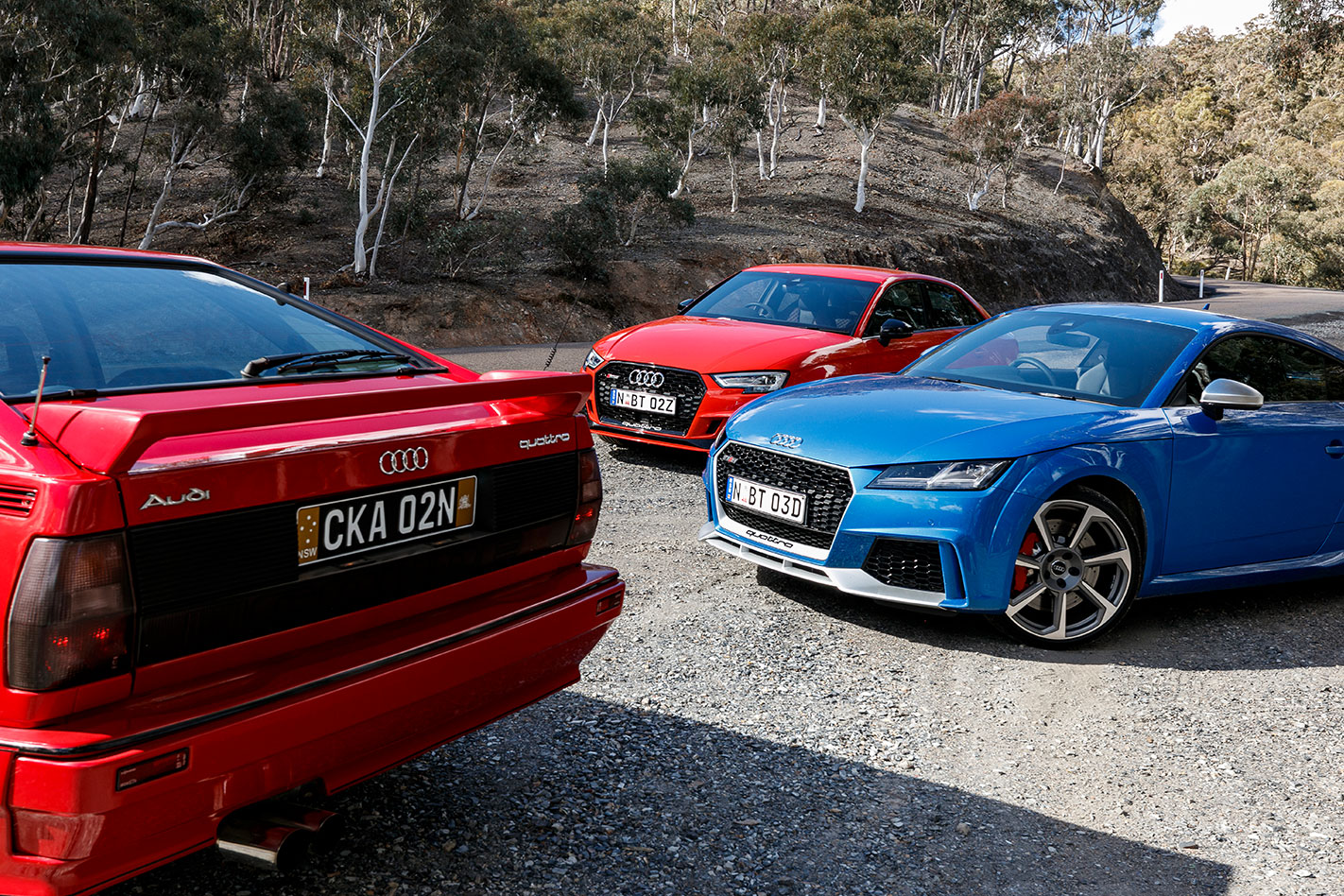
There is clear turn-in understeer, the body heaving over its outside tyre like a human lumbering onto the couch after work. Except in this Audi the driver is perched high with perfect all-round visibility thanks to an upright and shallow dashboard soaked in 1980s orange digital instrumentation, including a diagram showing which way drive is headed. And by this point working that back section is a must.
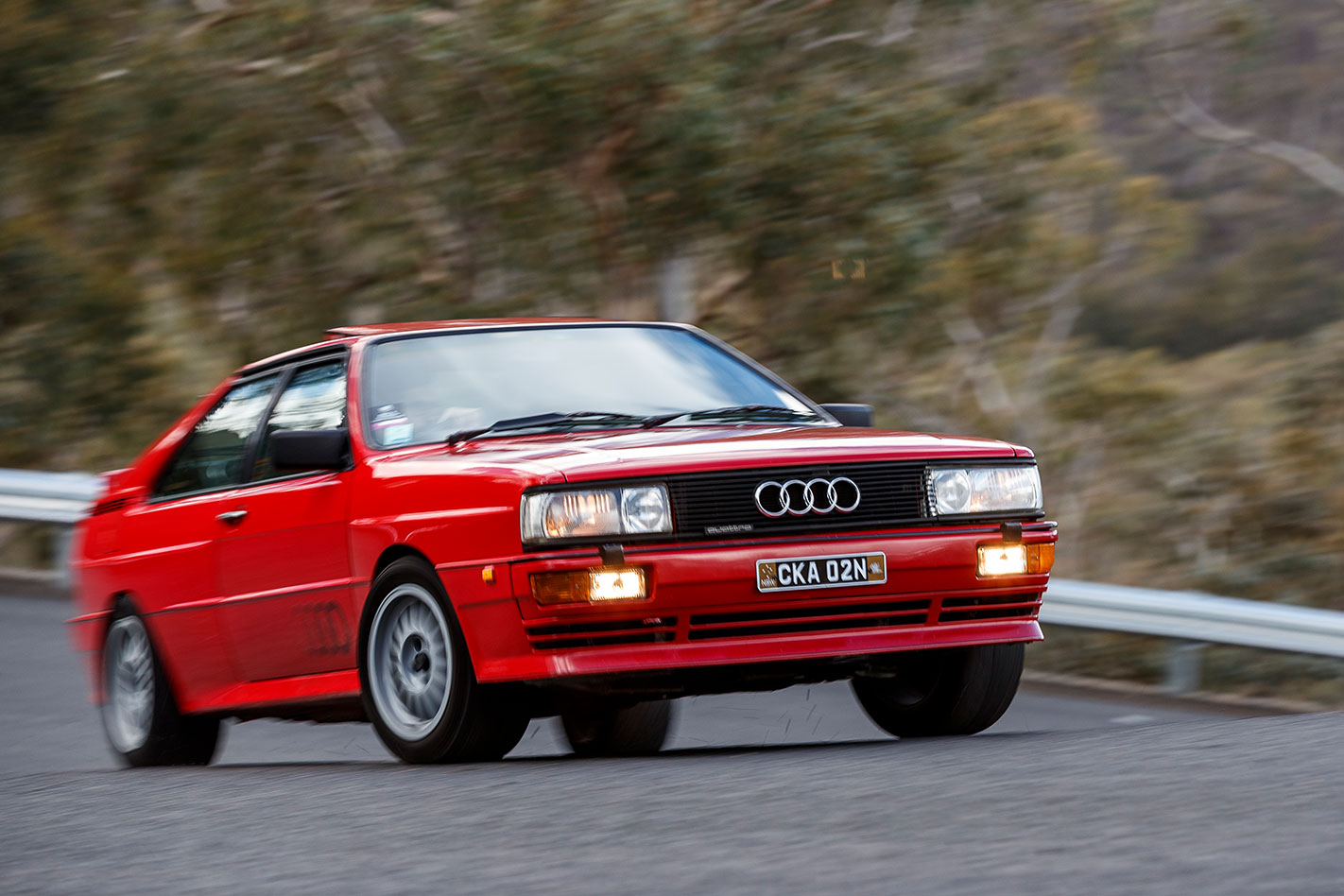
The 2226cc ‘MB’ five driven here (also introduced that year) adds hydraulic lifters and a tech-heavy ECU compared with the original 2144cc unit from 1980. Outputs remain unchanged, but torque is produced lower, with the 0-100km/h sprint falling to 6.7sec.
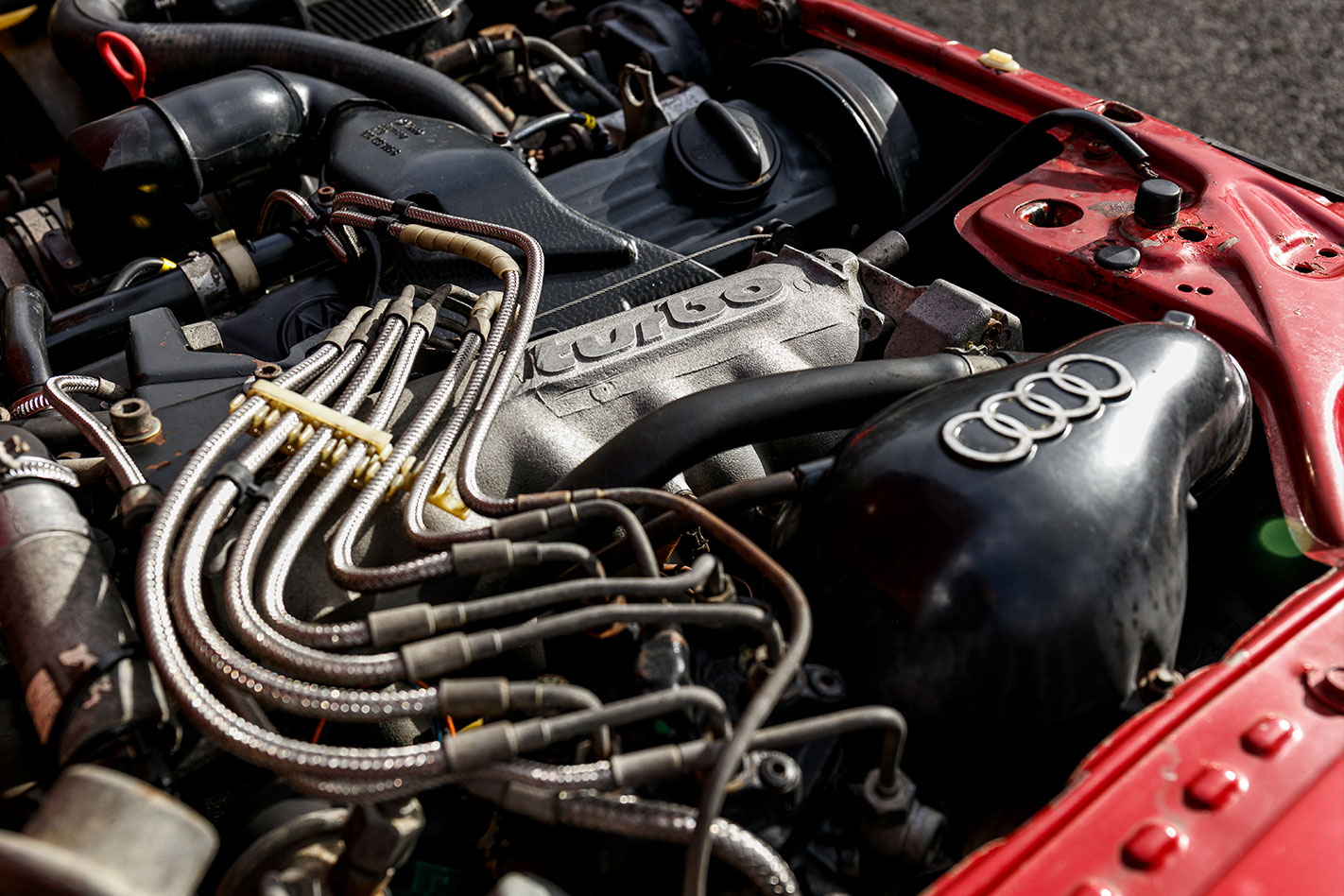
Starting the RS3 leaves a driver in no doubt that an odd cylinder count features under the bonnet. Especially when cold, a staccato thrum shimmies through the Alcantara-clad steering wheel, while a digeridoo-esque blare pumps from the quad tailpipes.
Audi has replaced its seven-time winner of international engine of the year with another five-cylinder, now a 26kg-lighter, alloy-crankcase 2.5-litre port/direct injection turbo unit producing 24kW more than 2009’s TT RS. Cranking 294kW from 5850rpm until 7000rpm, and 480Nm between 1700rpm and 5850rpm, 4.1sec is the 0-100km/h golden ticket for the RS3, which the TT RS slashes to 3.7sec.
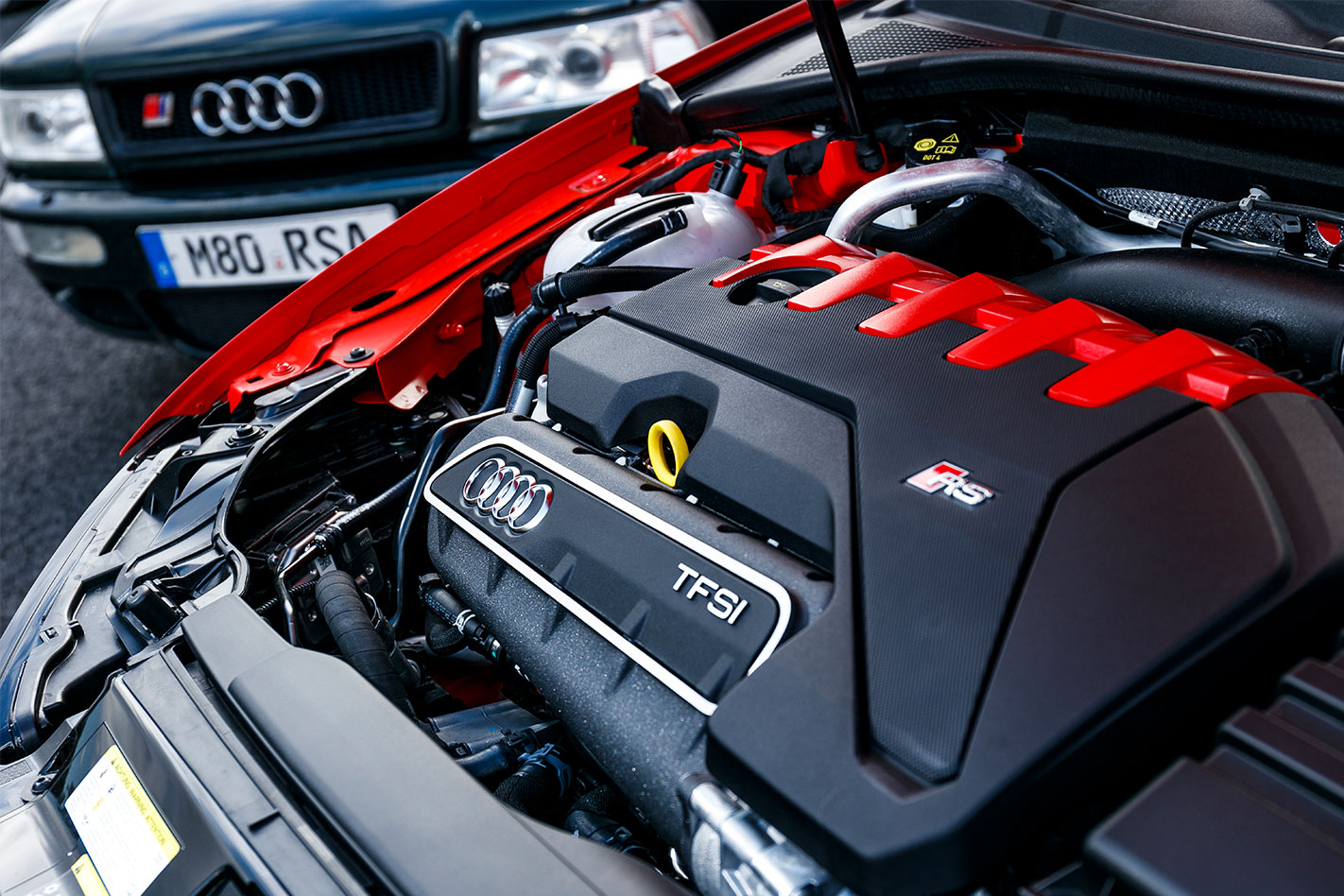
There’s another question here, though: Is a $140K-plus TT RS that much better than an $93K RS3? We figured it wasn’t; but that was certainly challenged.
The 75kg-lighter TT RS pivots around its driver in a way the RS3 cannot. Both suffer from a Haldex all-wheel drive system that can apparently send 100 per cent of drive rearwards, yet doesn’t feel inclined to. Ultimately, the variable system isn’t as engaging or incisive as a mechanical crown-centre diff kitted S4 or S5 that can swing into throttle-induced oversteer.
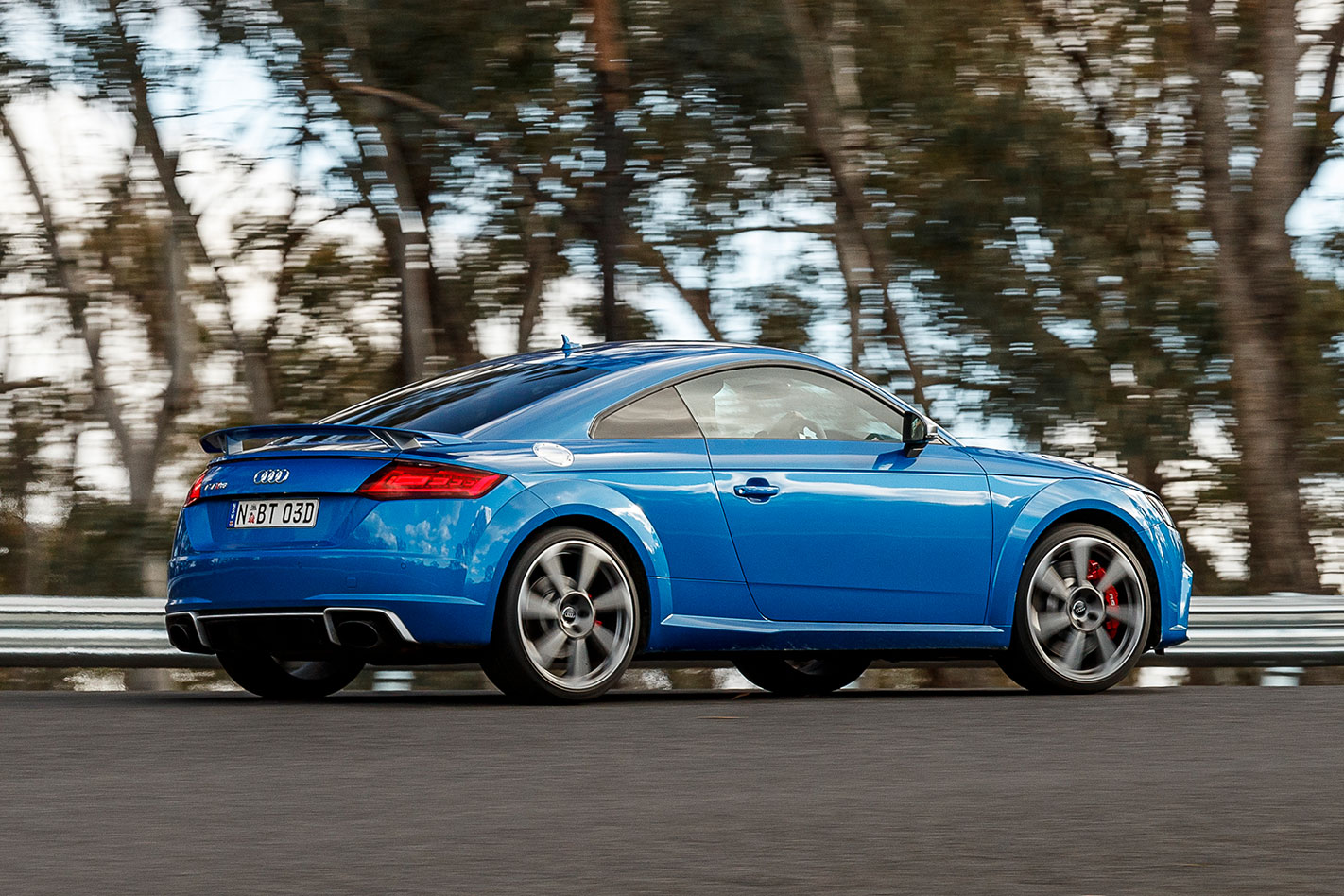
Neither are as playful as a BMW M2 or 718 Cayman, and they don’t ride quite as calmly either – the magnetic-adjustable dampers aren’t harsh, but they create chatter in all modes.
Both Audis also, however, deliver immense point-and-shoot pace that can be mesmerising and deeply satisfying, with a huge part of that pleasure down to superbly light and pin-sharp steering that never resorts to clichéd heavy weighting in Dynamic.
Again, the TT RS ultimately feels more petite and agile than the RS3, aided by a lower driving position and grippier 255mm-wide 20-inch Michelin Pilot Super Sport (versus 255mm front/235mm rear 19-inch Pirelli P Zero) rubber. But it’s that mix of sound and also detail that draws these vehicles together.
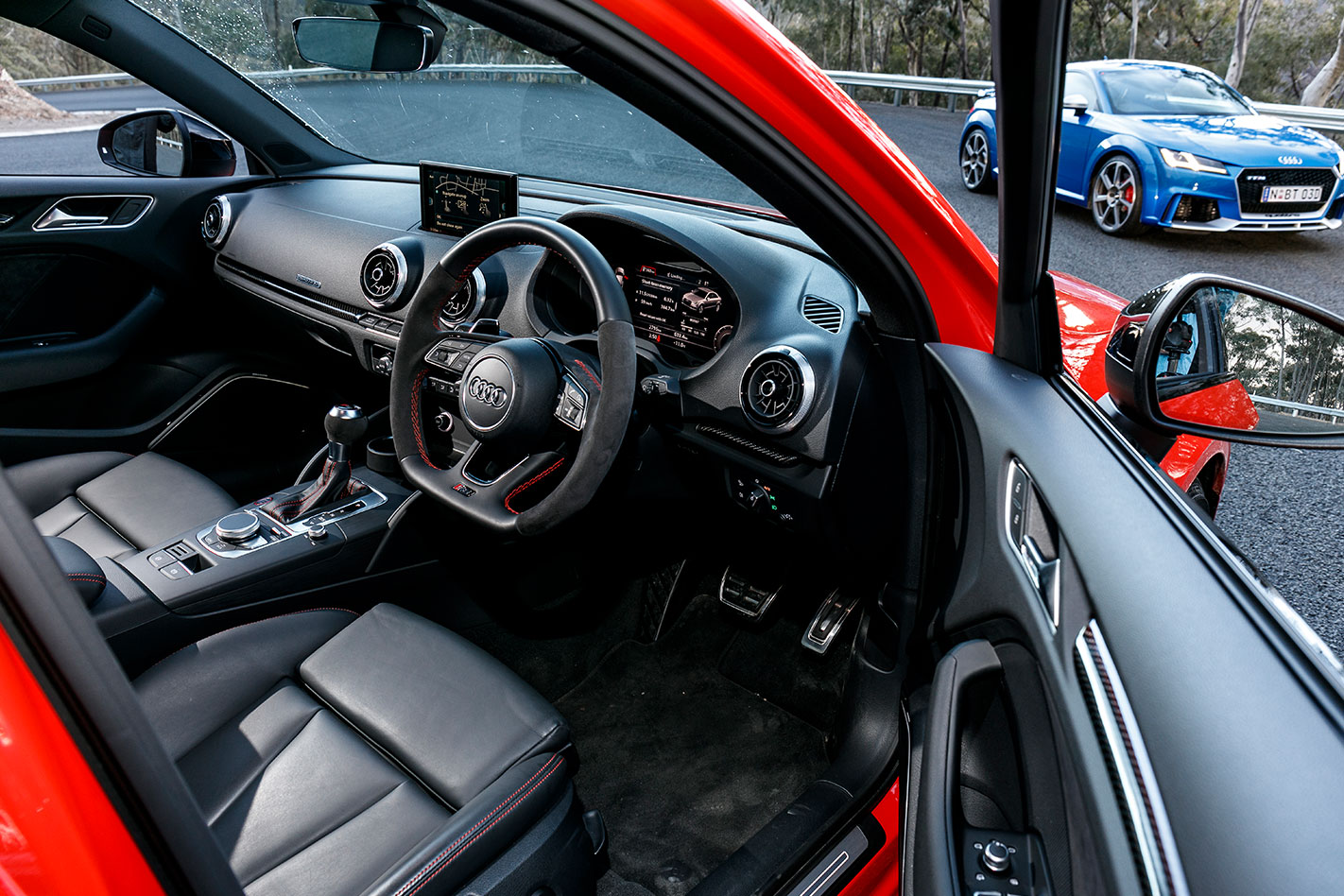
Cloud cover rolls over the mountain pass as photographer Ellen snaps away capturing the oldest car here, pouring over its square jaw and across its hard-edged side character crease to its integrated lip spoiler with ‘Quattro’ scripted into the rear-window demister lines. It’s unmistakably ’80s.

As we convoy home in the rain, anyone standing atop the mountain pass would have understood this was quattro all-wheel drive weather and heard this was echo-chamber five-pot territory. Just as evolution settled on multiples of five as the ideal number of digits, right here, right now it also feels like the ideal number of cylinders.
Audi Quattro – Rorty Rally Revolutionary
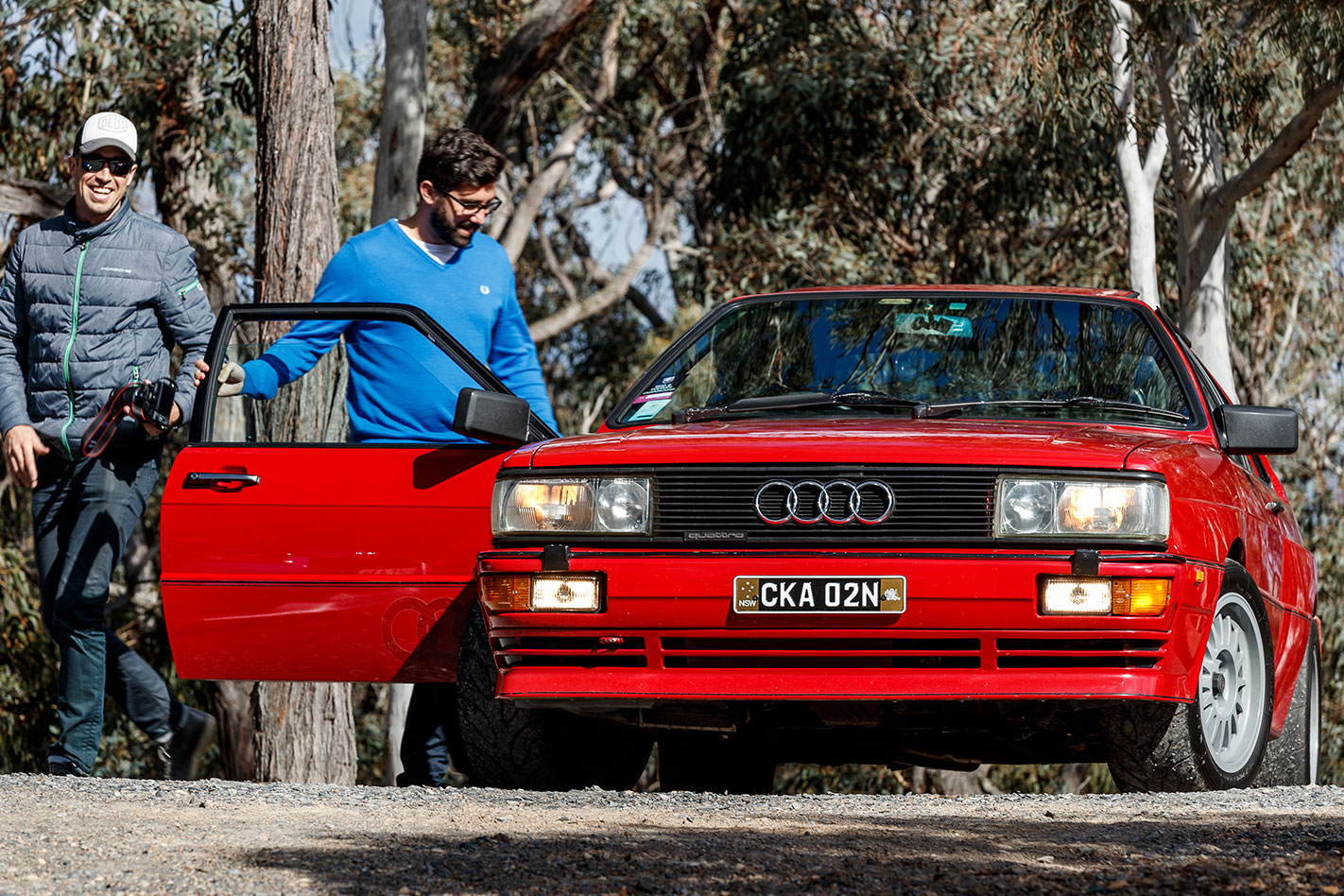
Audi RS2 – Original Fast Family Hauler
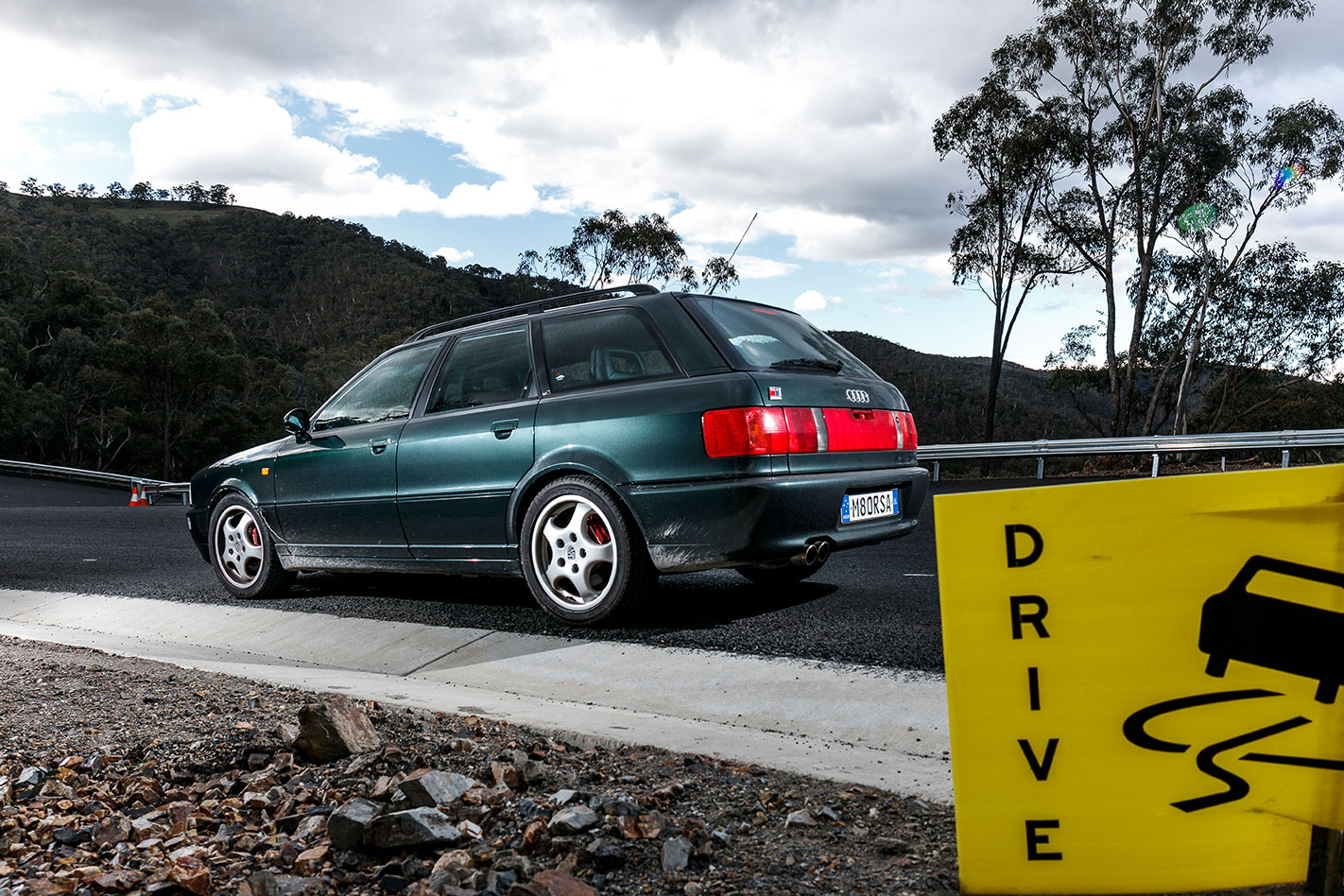
Audi TT RS – Style Icon gets Angry
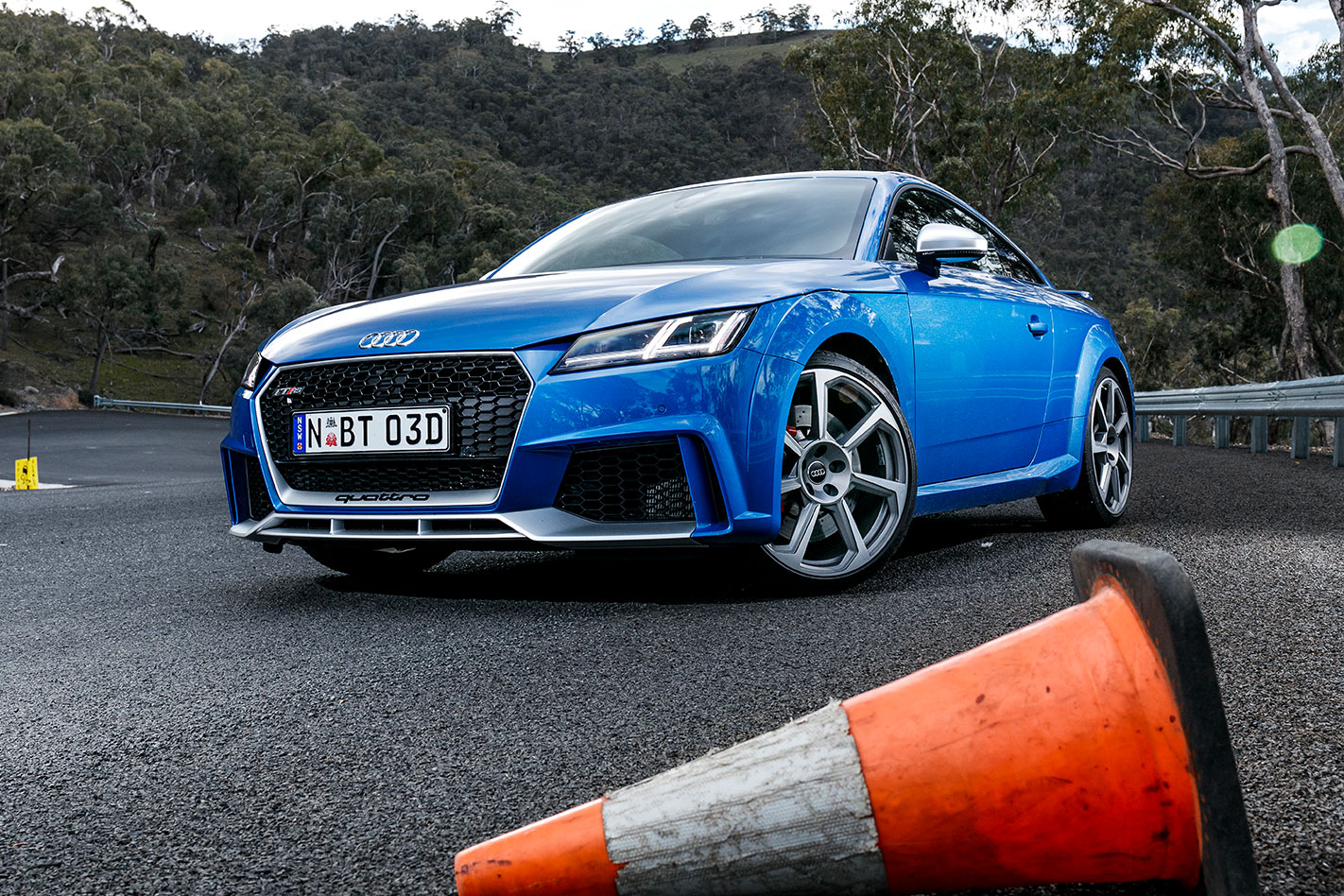
Audi RS3 – Booted Five-Pot has Mass Appeal
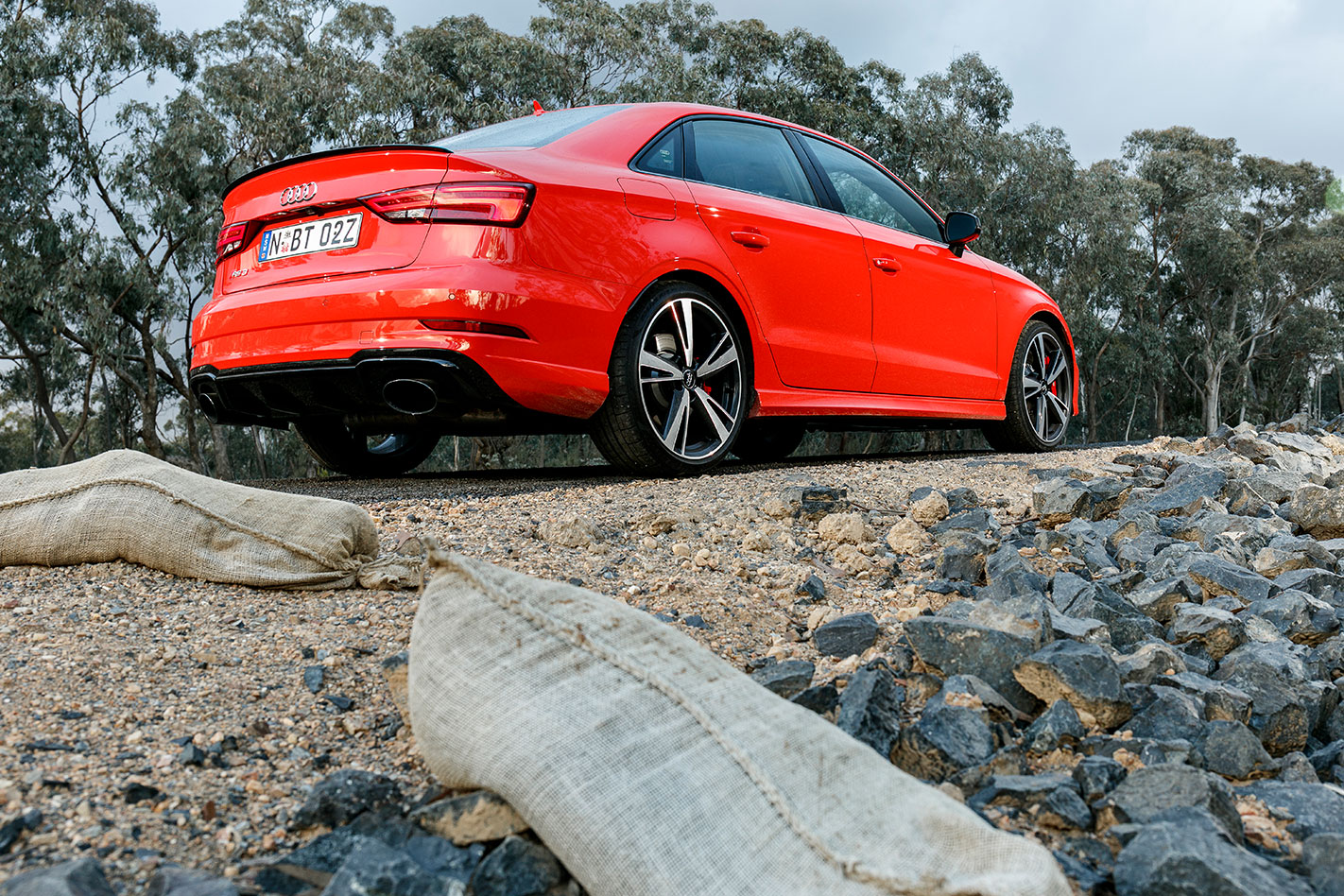
u00a0 | Audi MB Quattro | Audi RS2 Avant | Audi RS3 | Audi TT RS |
BODY | 2-door, 4-seat coupe | 5-door, 5-seat wagon | 4-door, 5-seat sedan | 3-door, 4-seat coupe |
DRIVE | all-wheel | all-wheel | all-wheel | all-wheel |
ENGINE | 2226cc inline-5cyl, DOHC, 20v, turbocharger | 2226cc inline-5cyl, DOHC, 20v, turbocharger | 2480cc inline-5cyl, DOHC, 20v, turbocharger | 2480cc inline-5cyl, DOHC, 20v, turbocharger |
BORE/STROKE | 81.0 x 86.4mm | 81.0 x 86.4mm | 82.5 x 92.8mm | 82.5 x 92.8mm |
COMPRESSION | 8.6:1 | 9.0:1 | 10.1:1 | 10.1:1 |
POWER | 147kW @ 5800rpm | 232kW @ 6500rpm | 294kW @ 5850-7000rpm | 294kW @ 5850-7000rpm |
TORQUE | 270Nm @ 3000rpm | 410Nm @ 3000rpm | 480Nm @ 1700-5850rpm | 480Nm @ 1700-5850rpm |
POWER/WEIGHT | 113kW/tonne | 146kW/tonne | 194kW/tonne | 204kW/tonne |
TRANSMISSION | 5-speed manual | 6-speed manual | 7-speed dual-clutch | 7-speed dual-clutch |
WEIGHT | 1300kg | 1595kg | 1515kg | 1440kg |
SUSPENSION (F) | struts, coil springs, anti-roll bar | struts, coil springs, anti-roll bar | struts, coil springs, adaptive dampers, anti-roll bar | struts, coil springs, adaptive dampers, anti-roll bar |
SUSPENSION (R) | struts, coil springs, anti-roll bar | multi-links, coil springs, anti-roll bar | multi-links, coil springs, magnetive dampers, anti-roll bar | multi-links, coil springs, magnetive dampers, anti-roll bar |
L/W/H | 4404/1723/1344mm | 4510/1695/1386mm | 4479/1802/1397mm | 4191/1832/1344mm |
WHEELBASE | 2524mm | 2597mm | 2631mm | 2505mm |
TRACKS | 1421/1458mm (f/r) | 1448/1471mm (f/r) | 1599/1528mm (f/r) | 1564/1543mm (f/r) |
STEERING | hydraulically-assisted rack-and-pinion | hydraulically-assisted rack-and-pinion | electrically-assisted rack-and-pinion | electrically-assisted rack-and-pinion |
BRAKES (F) | 280mm ventilated discs, 2-piston calipers | 304mm ventilated discs, 4-piston calipers | 370mm ventilated discs, 8-piston calipers | 370mm ventilated discs, 8-piston calipers |
BRAKES (R) | 245mm solid discs, single-piston calipers | 299mm ventilated discs, 4-piston calipers | 310mm ventilated discs, 4-piston calipers | 310mm ventilated discs, 4-piston calipers |
WHEELS | 15.0 x 6.0-inch (f/r) | 17.0 x 7.0-inch (f/r) | 19.0 x 8.0-inch (f/r) | 20.0 x 9.0-inch (f/r) |
TYRE SIZES | 205/60 VR15 (f/r) | 245/40 ZR17 (f/r) | 255/35 ZR19 (f); 235/35 ZR19 (r) | 255/30 ZR20 (f/r) |
TYRE | Yokohama S-Drive (current) | Michelin Pilot Sport 3 (current) | Pirelli P-Zero | Michelin Pilot Super Sport |
PRICE | N/A | N/A | $93,895 (as tested) | $147,150 (as tested) |
PROS | Communication; balance; sound | Engine; performance; dynamics | Superb engine; point-and-shoot pace | Dynamic delicacy/agility over RS3 |
CONS | Nose-heavy handling; price | Astonishing lag; super rare in RHD | Front-bias AWD; ride | Ride; lacks Cayman poise |
RATING | 4/5 | 4.5/5 | 4/5 | 4/5 |




